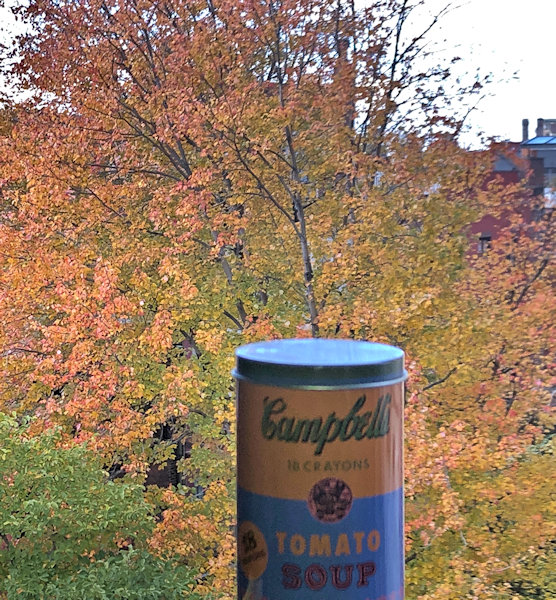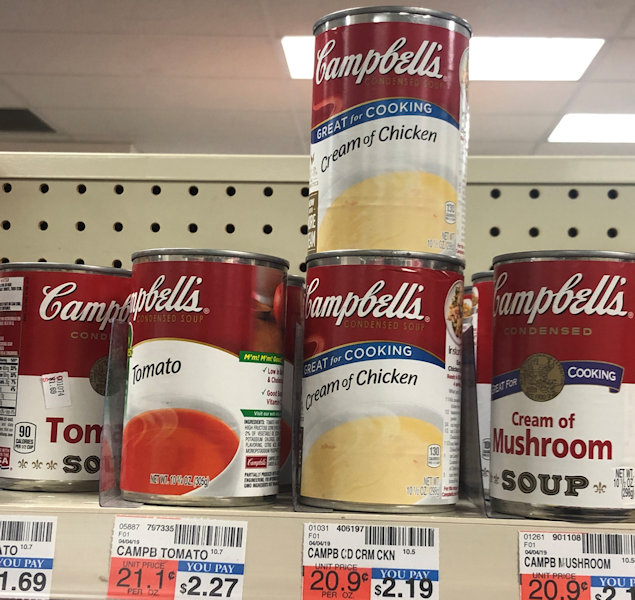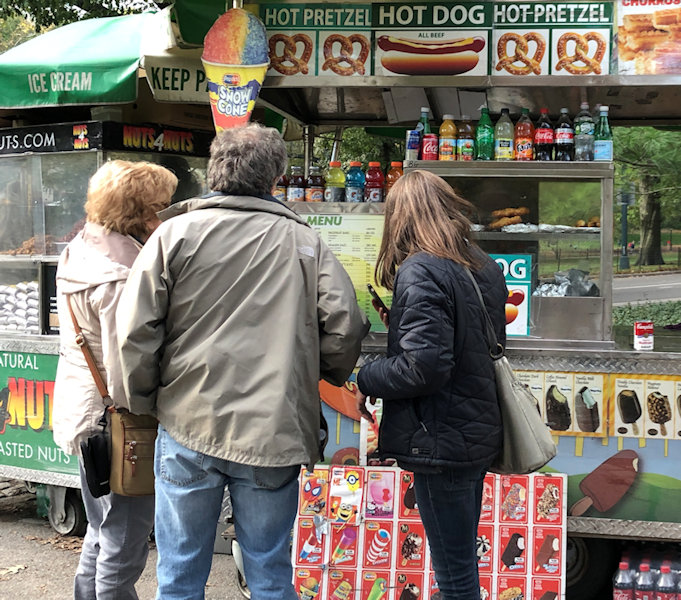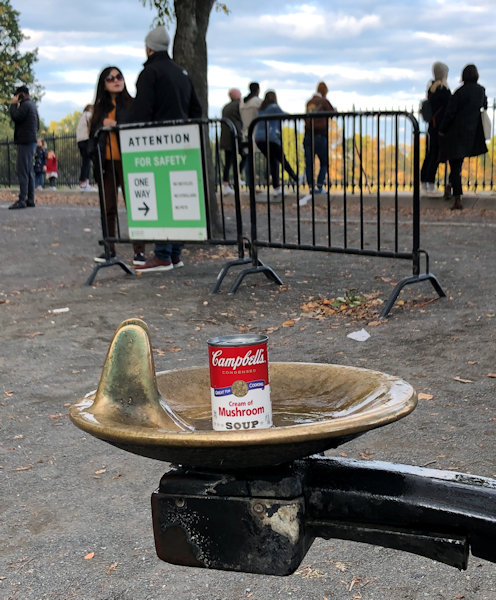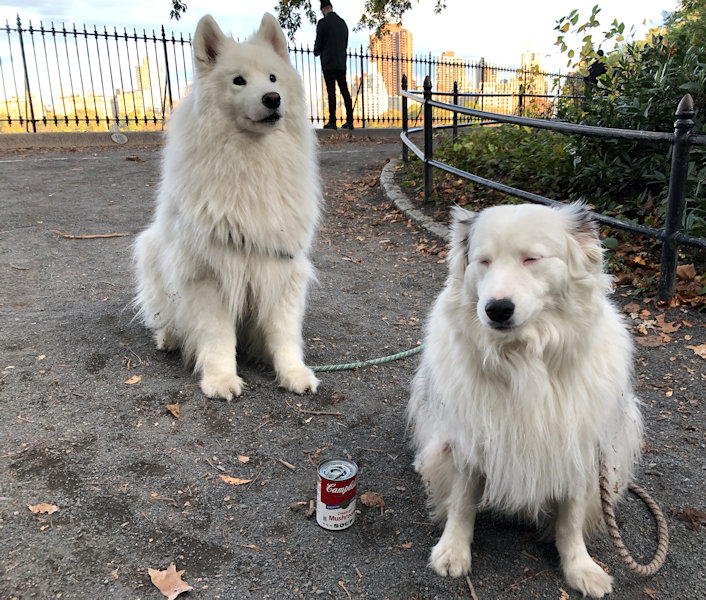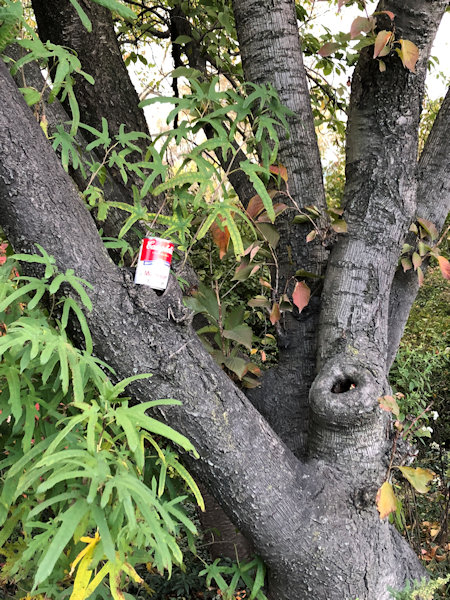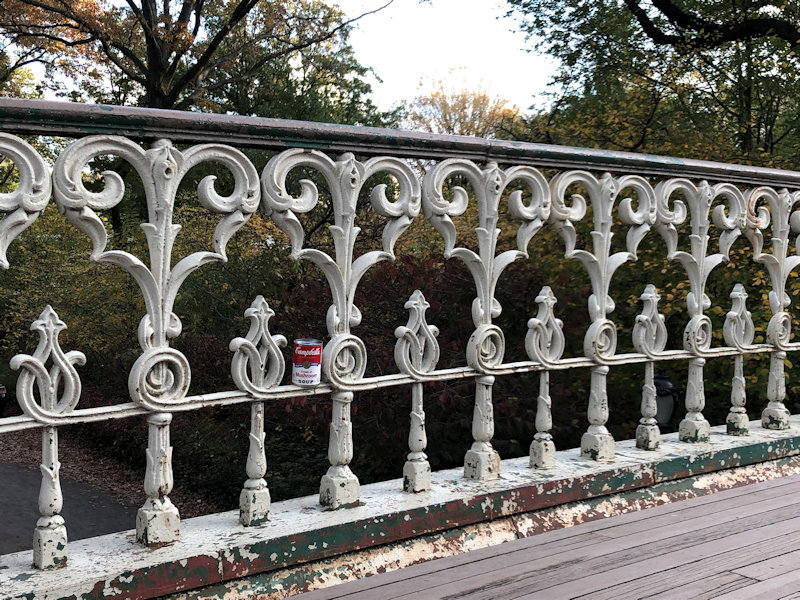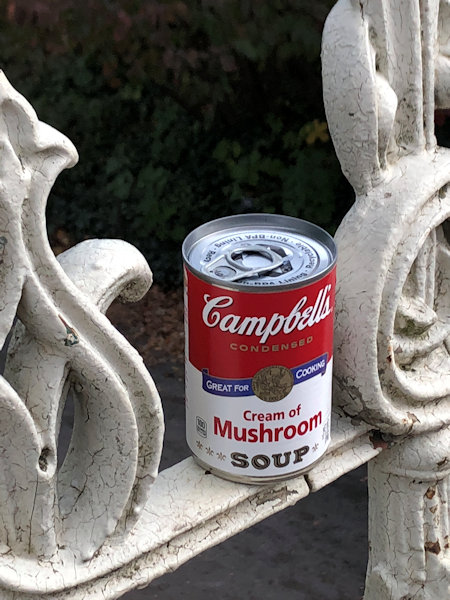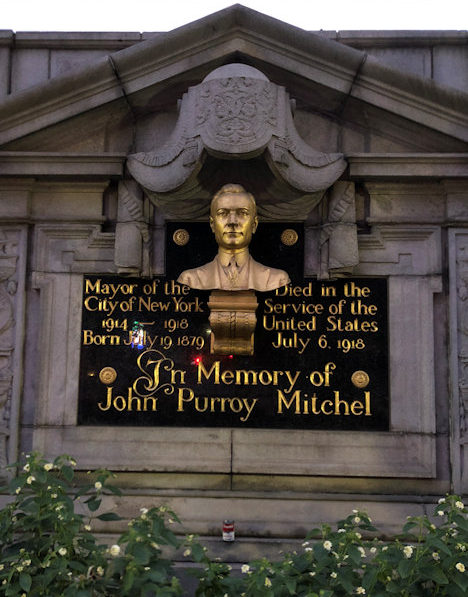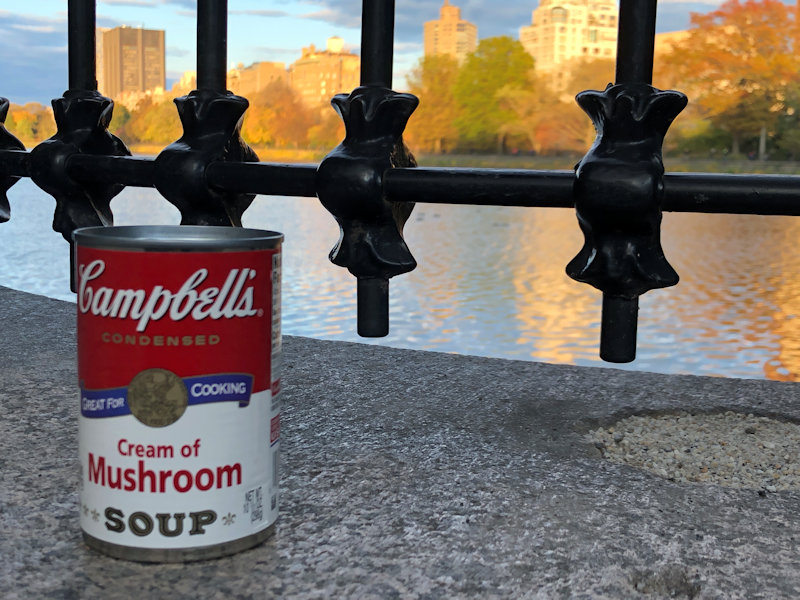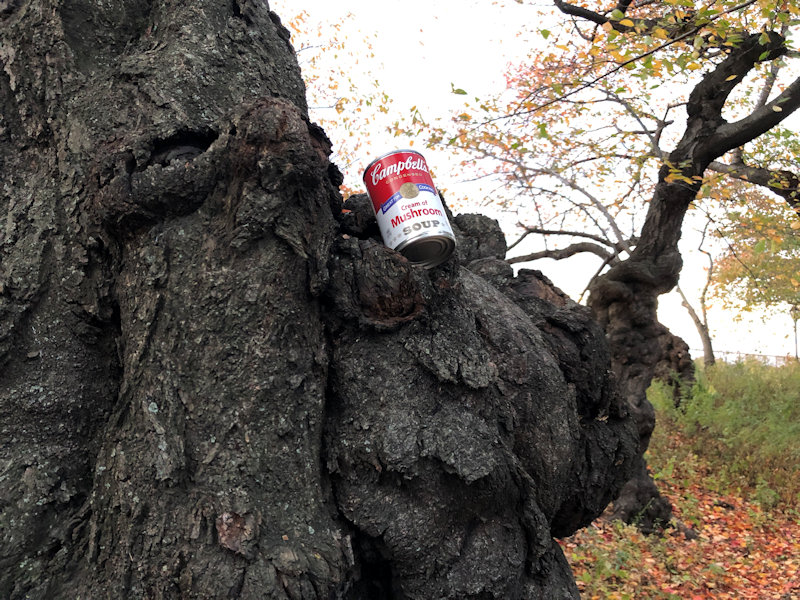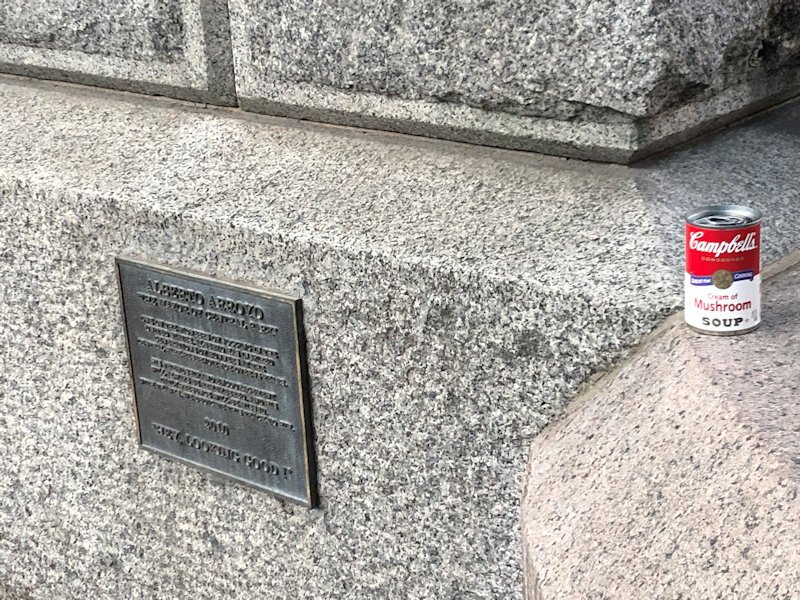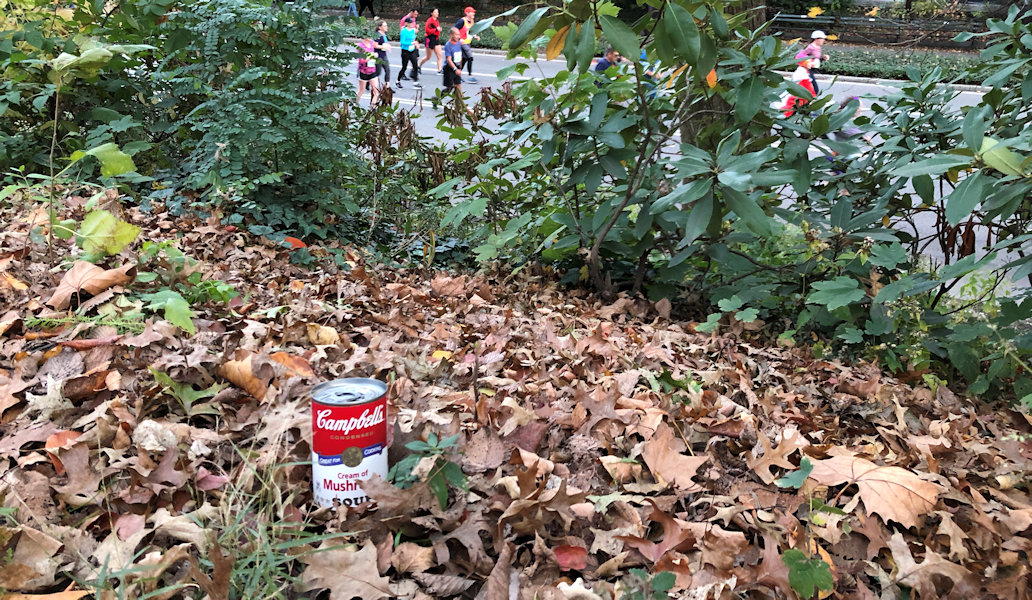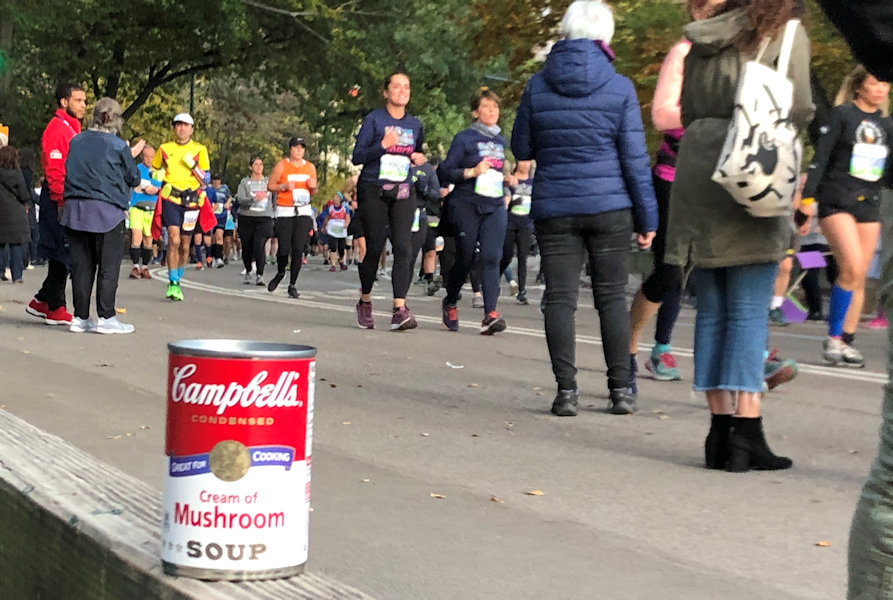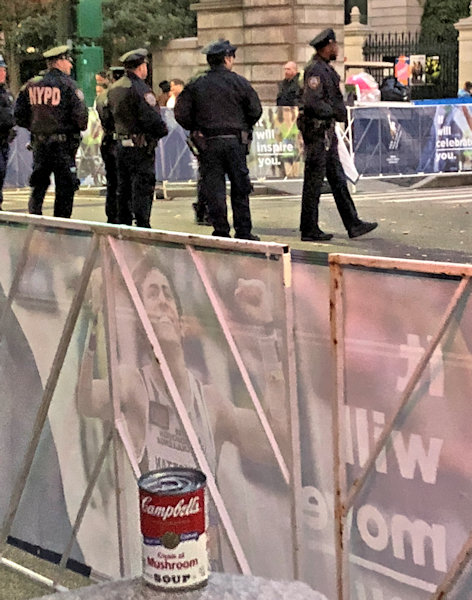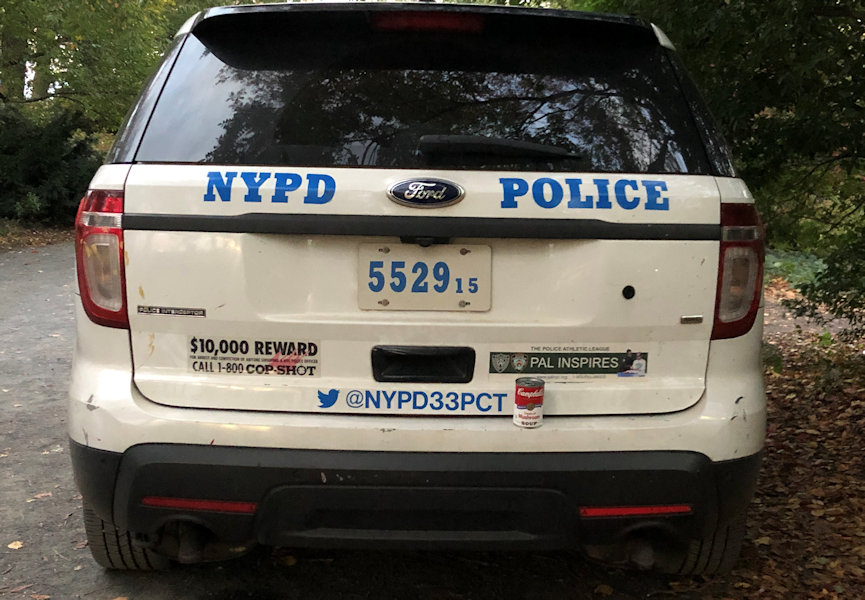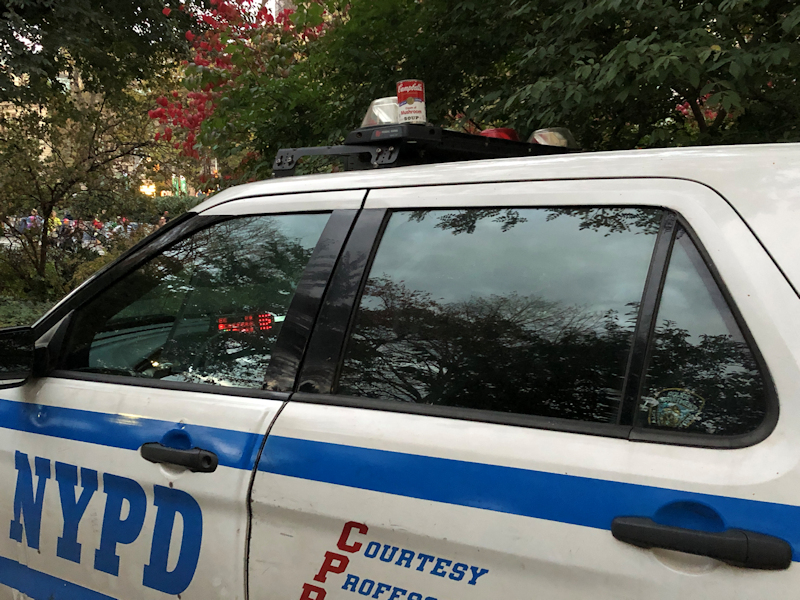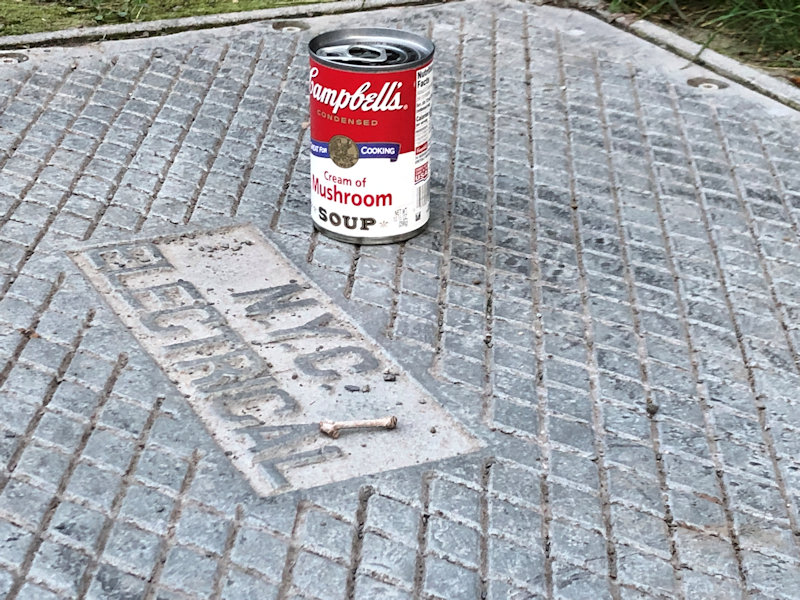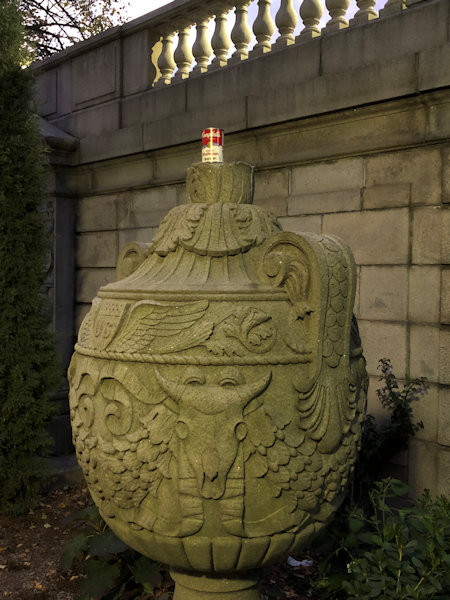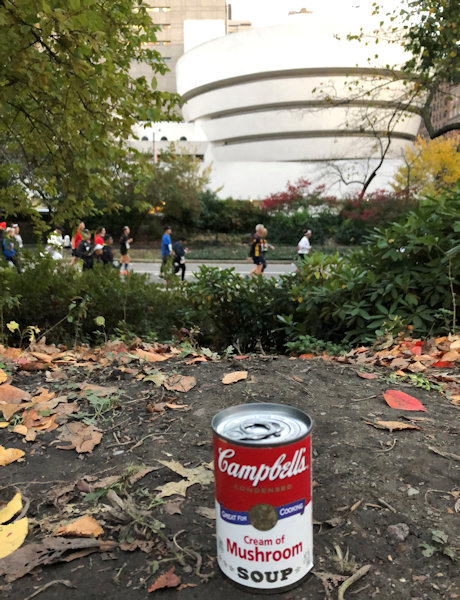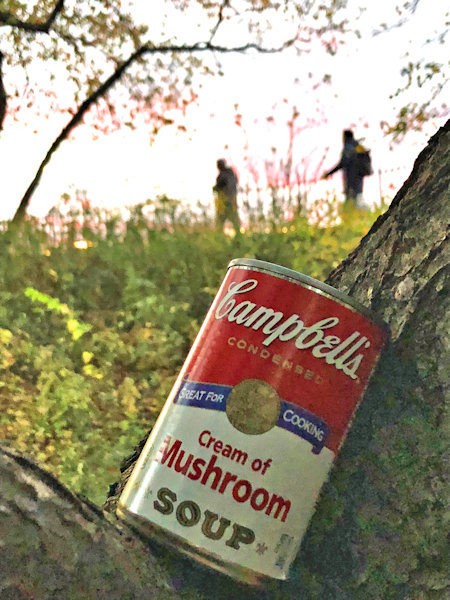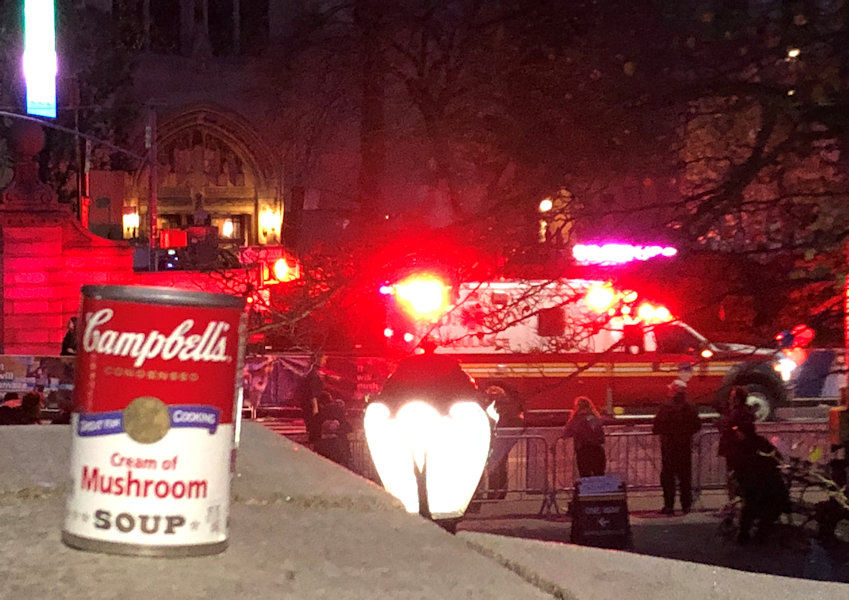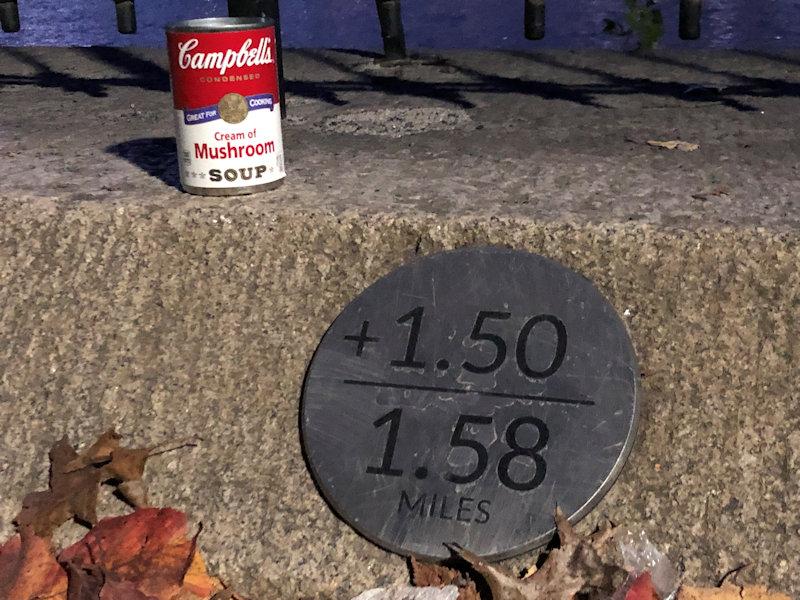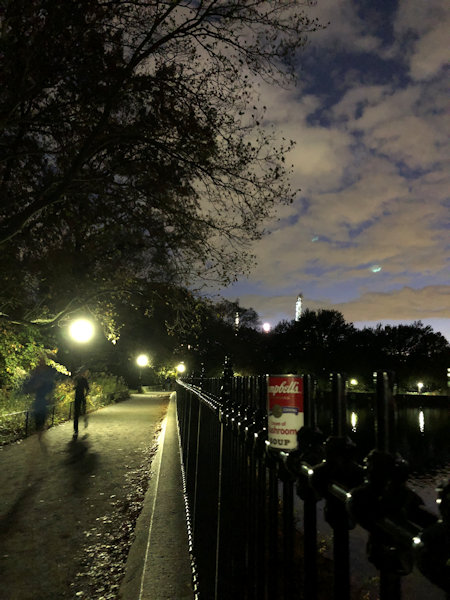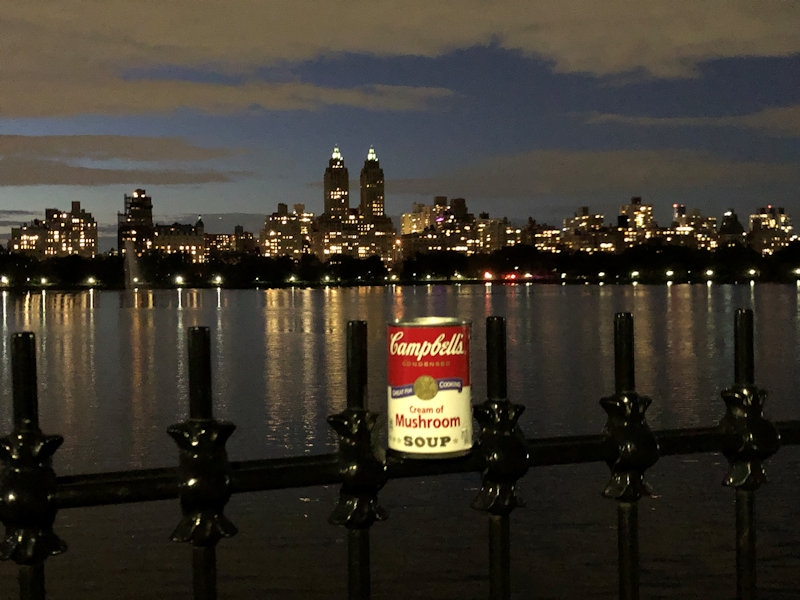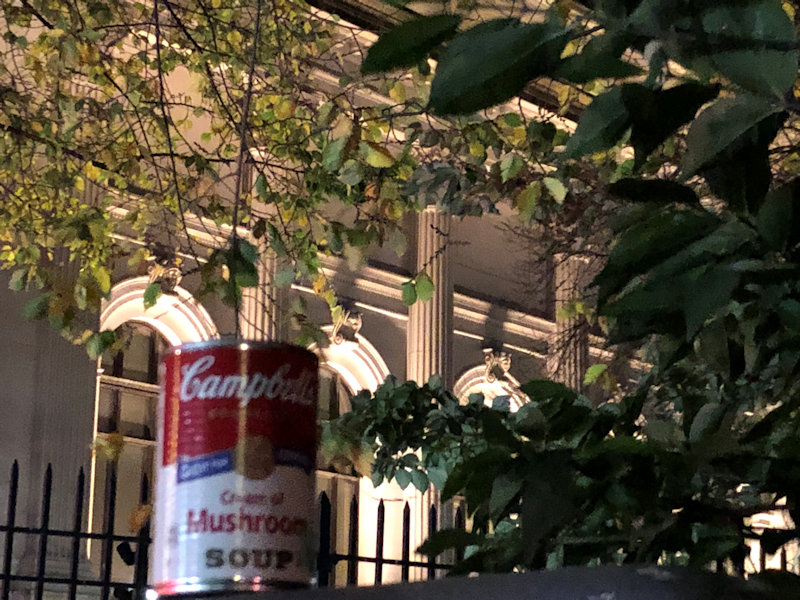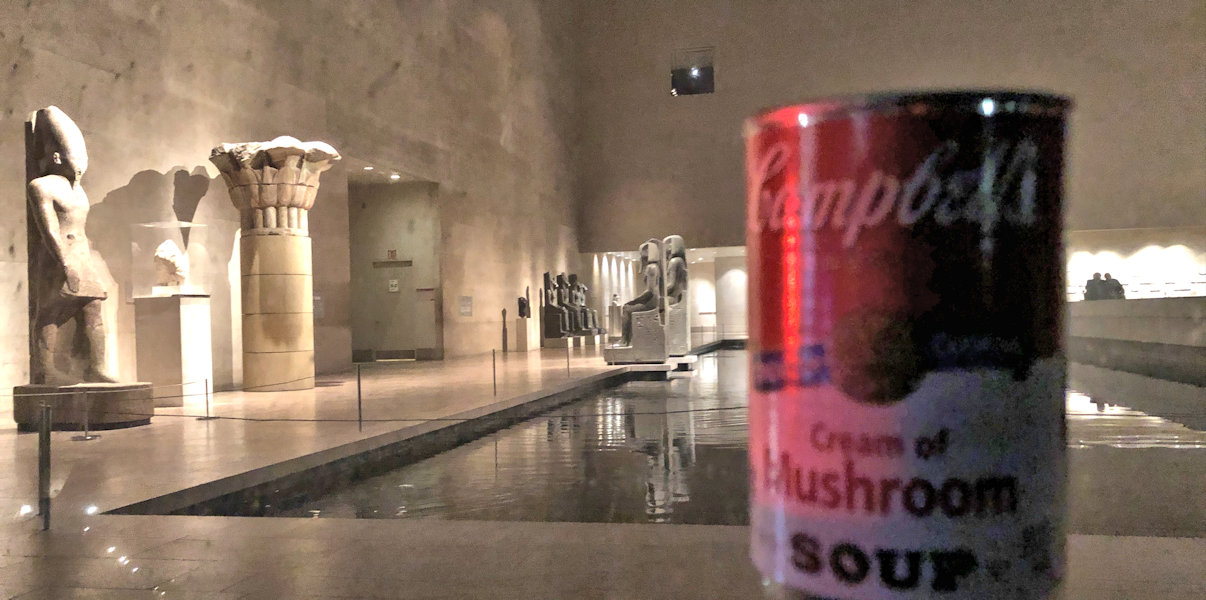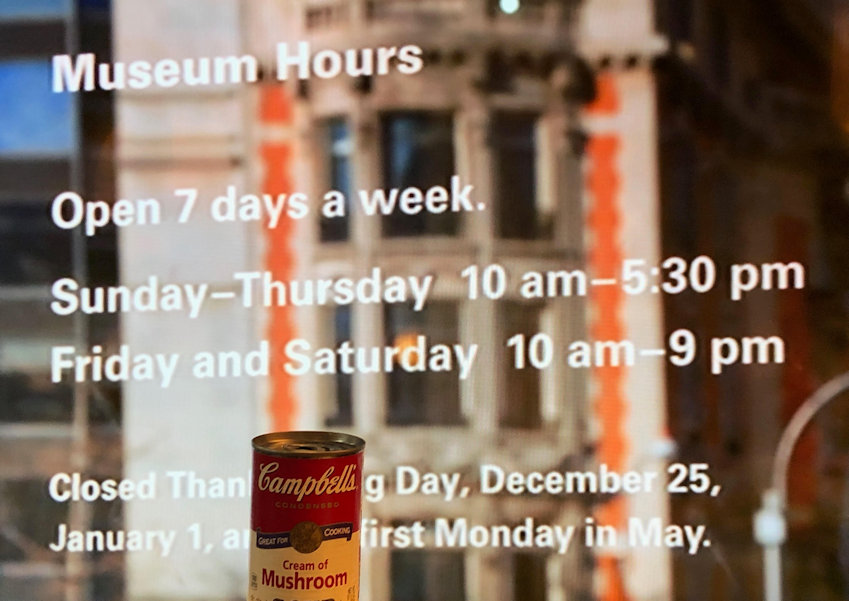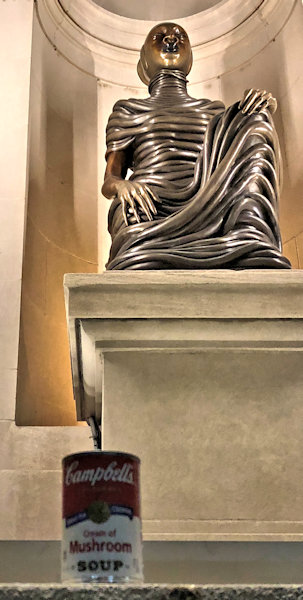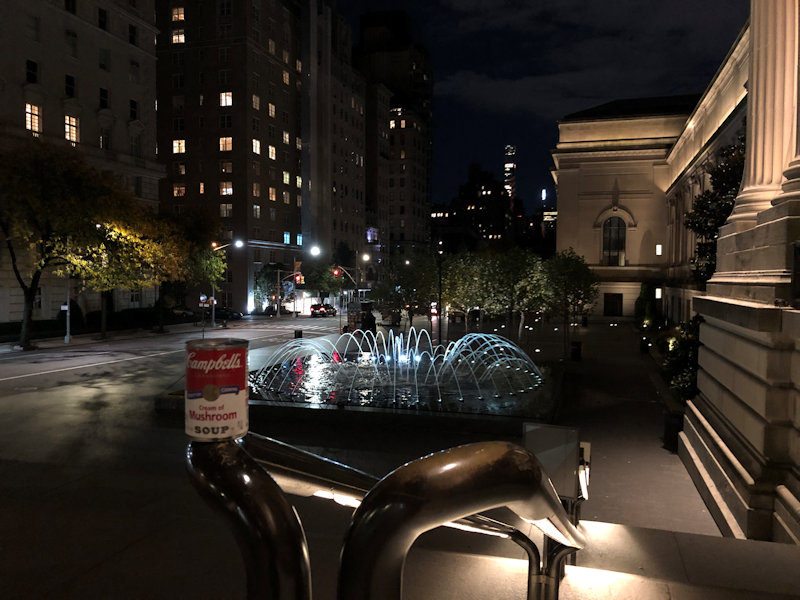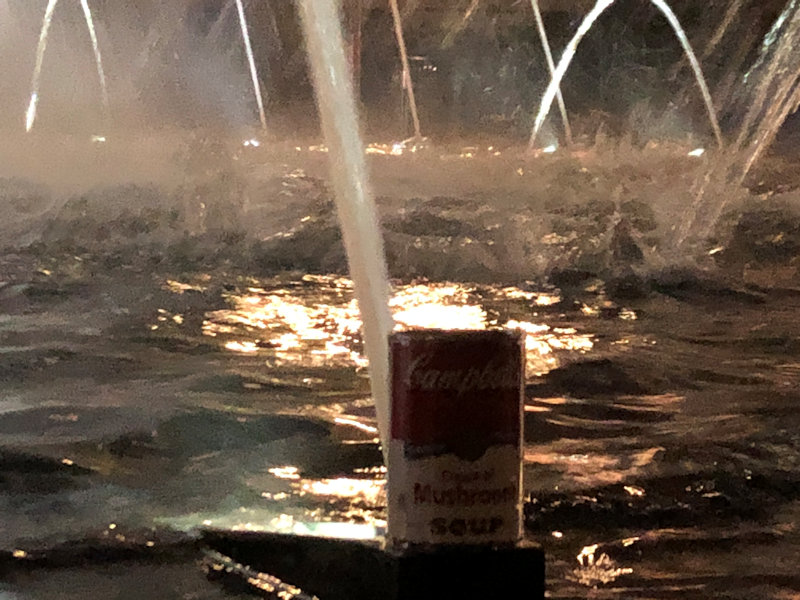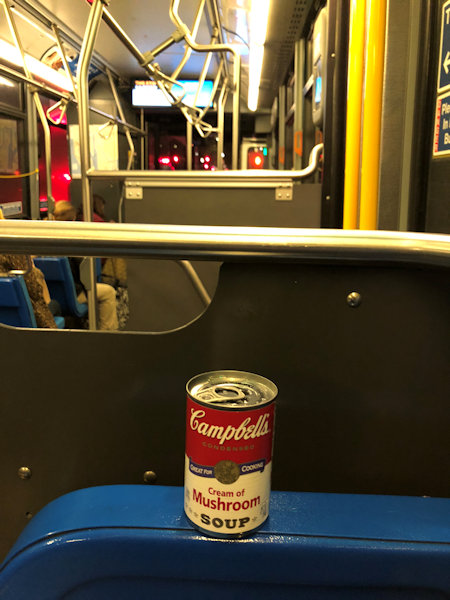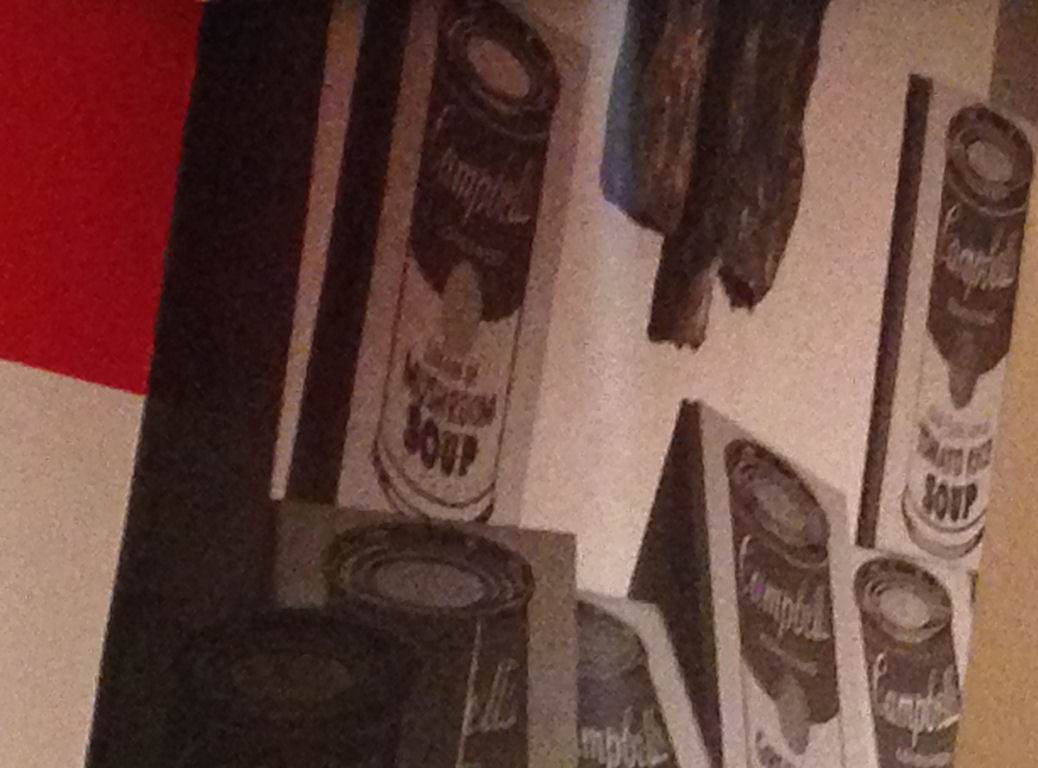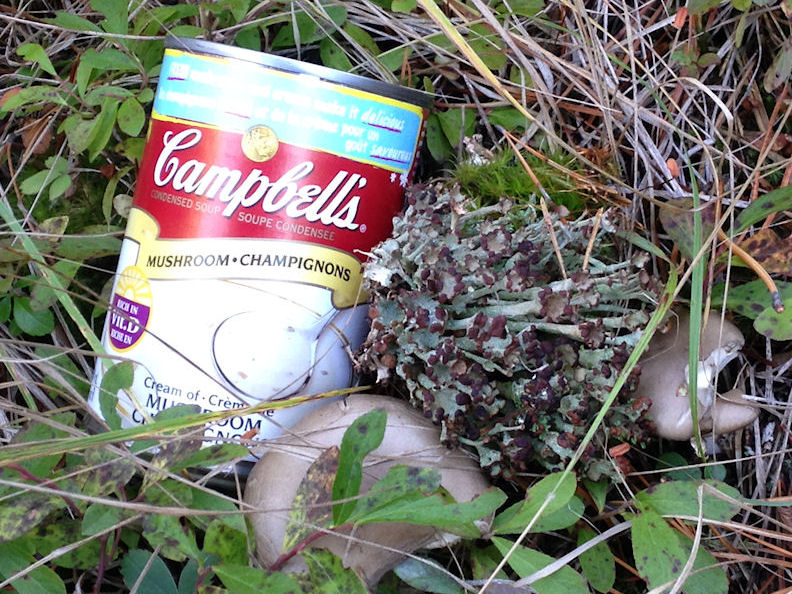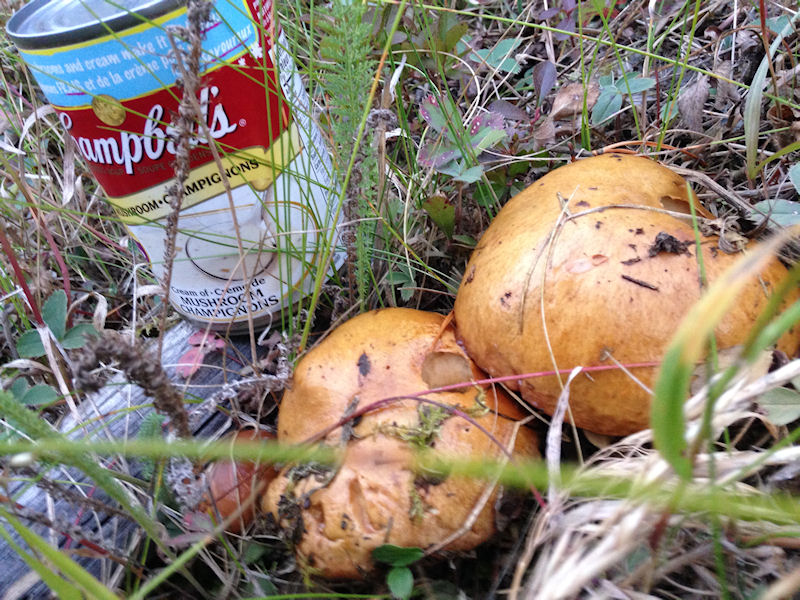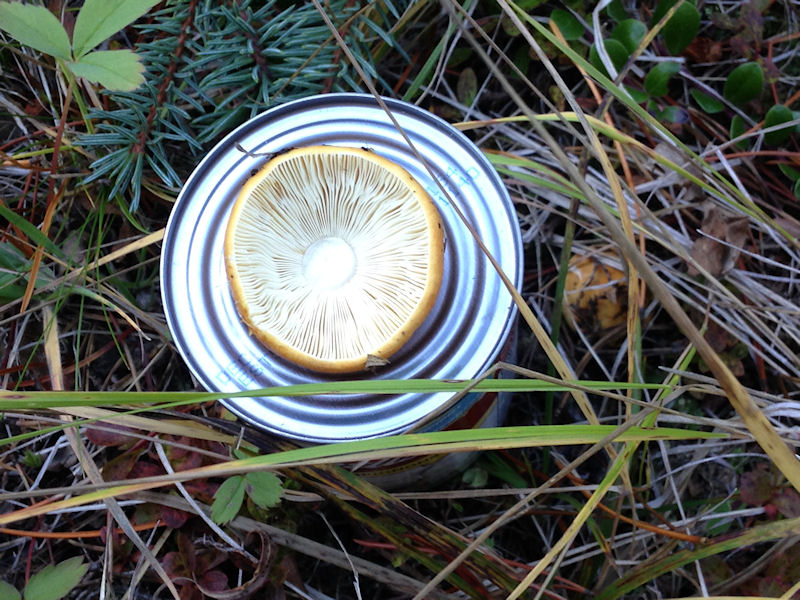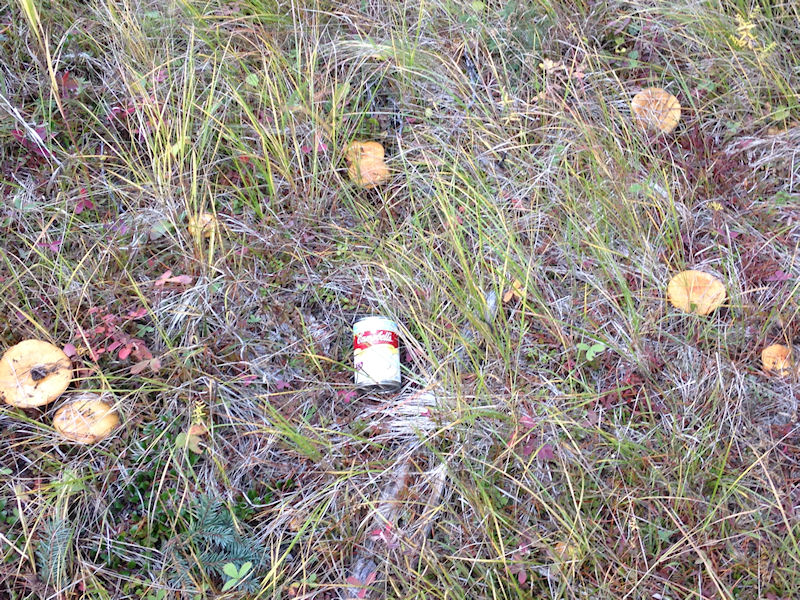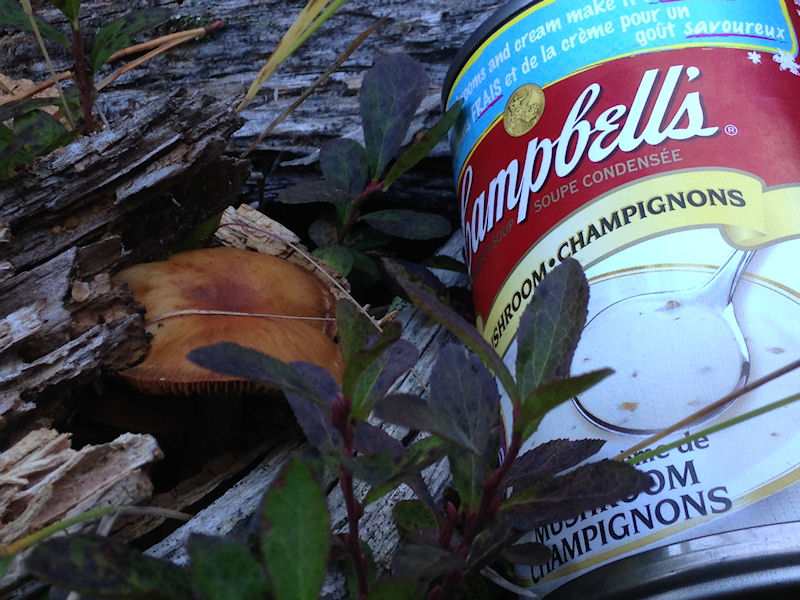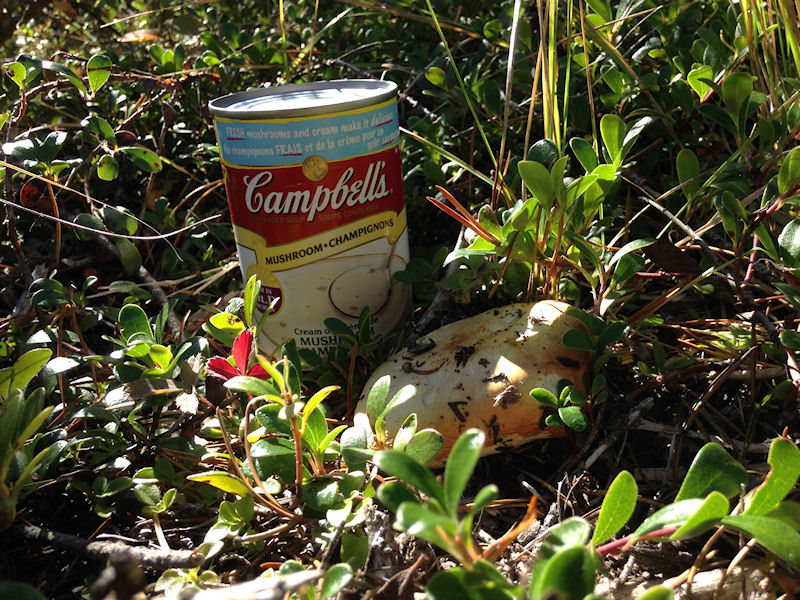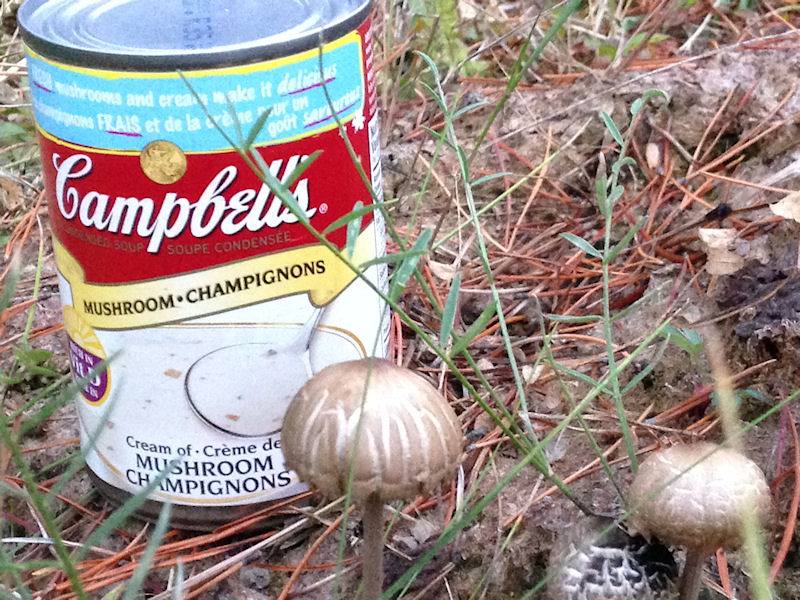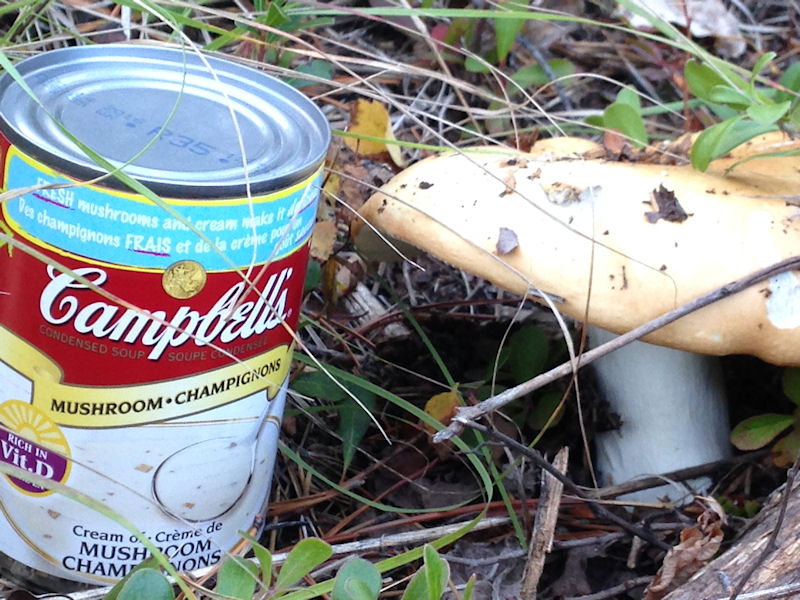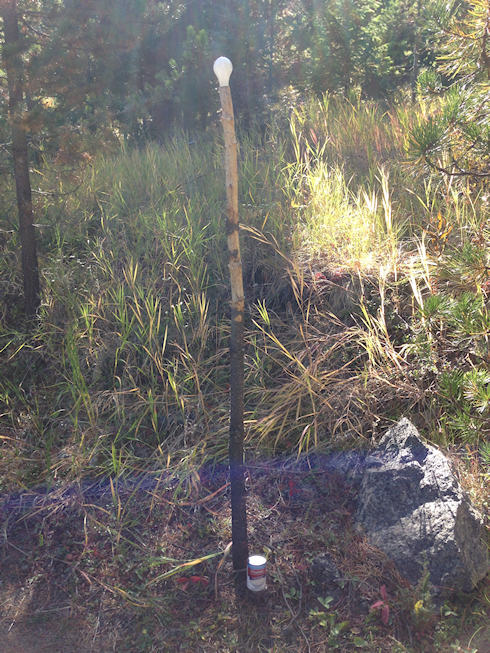When I sold my 160-acre ranch in British Columbia, I thought I would never see Starshine Valley again. But my new friends (new at the time—now they are old friends!), Gary and Val, invited me to house-sit for them while they went on a long trip to Scotland. My art project Warhol in the Forest was born as a fun surprise for their return.
I subsequently wrote about my love of the Campbell’s Soup can, and keep coming back to this theme. The idea of bringing the Warhol project to New York’s Central Park has been simmering in the pot of my brain for a few years now.
Finally, this past Sunday, it was time. It turned out to be a special day, as you will see. Here is the result, my newest art project, “Warhol in the Park.” The original project entailed 28 images—the number of cans of Campbell’s Soup in Val and Garry’s cupboard. This time I’ve upped it to a nice round 30.
Our heroine humbly begins her journey here, on the shelf at CVS. The price in Vancouver in 1999 was $1.19 to $1.69.
Oh boy, the park! First a bite to eat. I was sitting on that shelf a long time.
Now a drink of water.
Aw, such cute friends. They gave me a good sniff, and now they’re ignoring me.
Good view from up here.
Transported to Paris.
I wonder if the park will ever have the budget for repainting.
WWI Mayor Mitchel, this is a beautiful, if unexpected, memorial.
Jigsaw puzzle perfect.
Ah, resting in a gnarly bole.
Hey, looking good! Well thank you, Mayor of Central Park.
What’s going on over there?
It’s the New York Marathon!
Protectors of the realm.
While the cat’s away…
No wait, there’s someone in there. Oops.
On the grid.
This is just so unexpected. An ancient urn with a bull in the forest.
A spaceship? No, it’s the Guggenheim.
Sun is setting in the park.
To the rescue.
I feel like I’ve been running forever. But it’s only 1.5 miles. Or is that 3.08? What the heck does this mean?
Ghostly night runners probably know what it means.
What a city!
A Greek temple in the forest?
Time traveling to ancient Egypt.
First Monday in May. Anna Wintour, we love you.
Art inside and out. The Seated II, bronze statue by Kenyan artist Wangechi Mutu.
Where did everybody go?
Time for a splash. OK, I’m done. Taxi!
Home James, on the M2 down Fifth Avenue.
Thank you for joining us on our day in the park. This 121-year-old can is good until July 18, 2021. She’s going to have some more adventures before the casserole.
